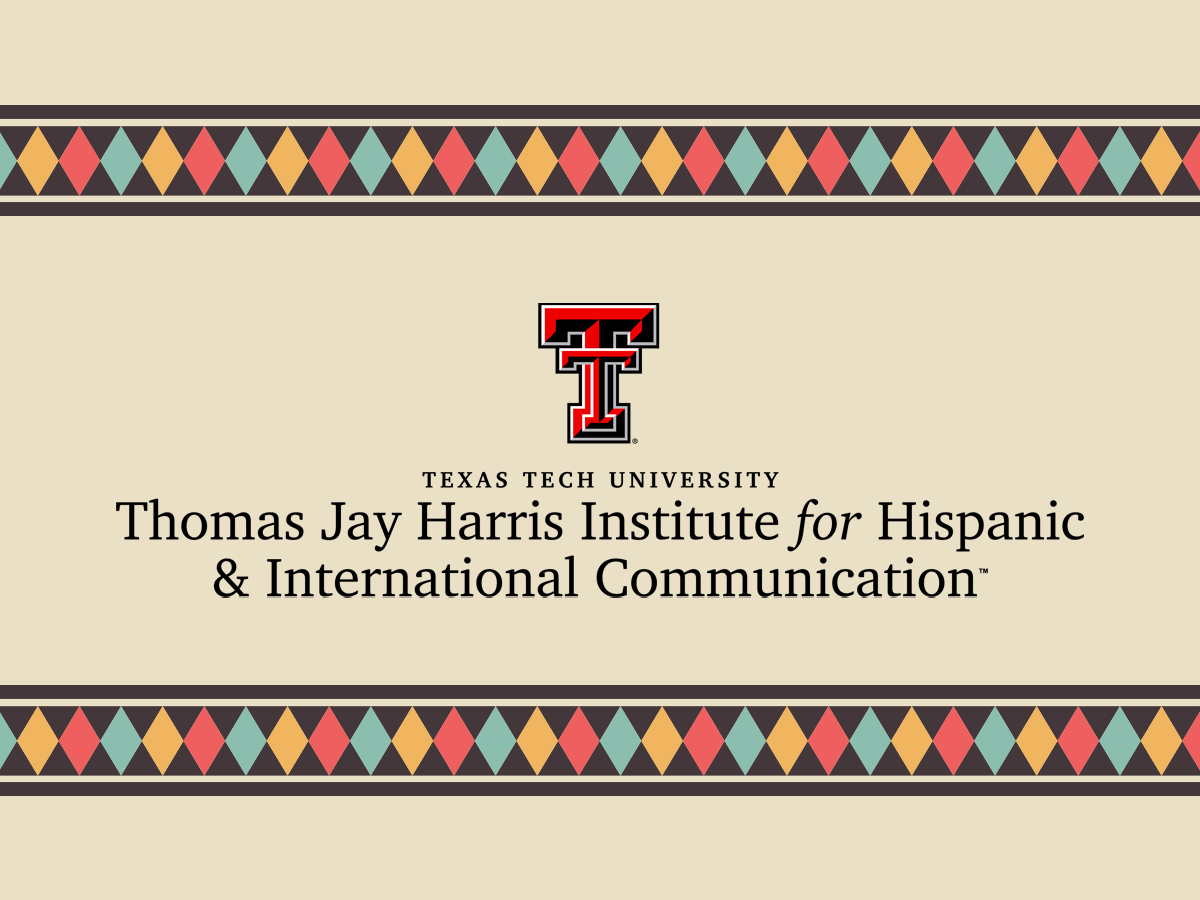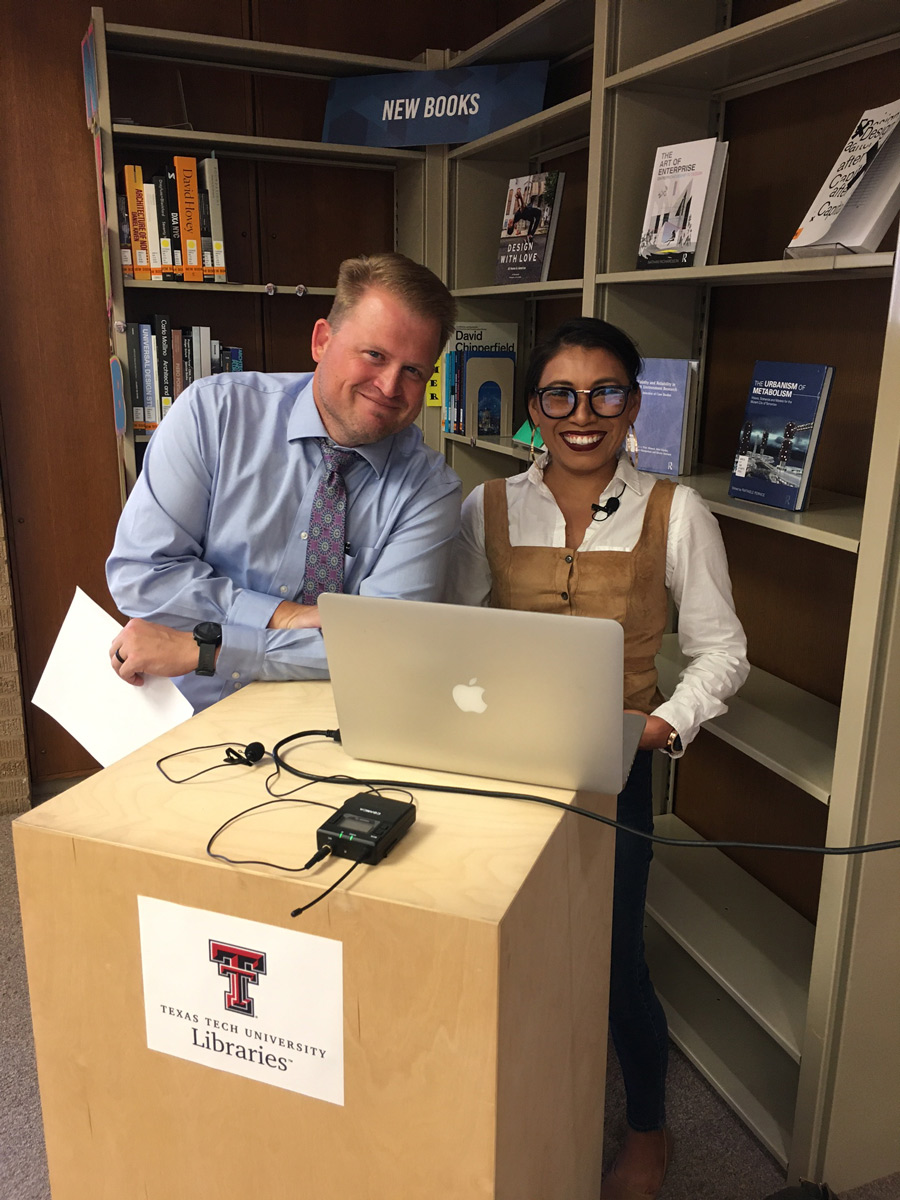
In conjunction with Hispanic Serving Institution Week, Lucinda Holt, associate professor of practice in the Department of Journalism & Creative Media Industries, spoke to members of the Texas Tech community about the initial findings of her most recent project, “Misinformation and Disinformation of Covid in Hispanic Communities in West Texas.”
 Holt, along with Professor Kent Wilkinson, Ph.D. and Librarian & Assistant Dean Ryan Litsey, , received a sizable grant from the Knight
Foundation to complete the study. The Knight Foundation is a non-profit organization
centered around journalism, the arts, and community building in small and mid-size
areas most threatened by attacks to democracy and civic engagement.
Holt, along with Professor Kent Wilkinson, Ph.D. and Librarian & Assistant Dean Ryan Litsey, , received a sizable grant from the Knight
Foundation to complete the study. The Knight Foundation is a non-profit organization
centered around journalism, the arts, and community building in small and mid-size
areas most threatened by attacks to democracy and civic engagement.
The study focuses on misinformation, disinformation, and crisis communications in Hispanic and Latino communities around the South Plains. While the study was founded on COVID-19 messaging, it encompasses the larger issue of effective crisis communication in these communities.
Holt spoke about the distinction between misinformation, disinformation, and malinformation, emphasizing that understanding the difference between them is important.
According to the United States Cybersecurity and Infrastructure Security Agency (CISA),
- “Misinformation is false, but not created or shared with the intention of causing harm.
- Disinformation is deliberately created to mislead, harm, or manipulate a person, social group, organization, or country.
- Malinformation is based on fact, but used out of context to mislead, harm, or manipulate.”
All three are used by both foreign and domestic actors in what CISA calls “MDM campaigns” (misinformation, disinformation, and malinformation).
Preliminary findings of the study showed that Hispanic communities in the South Plains were particularly vulnerable to misinformation and disinformation about the COVID-19 pandemic, leading to disproportionate impacts.
One respondent said a 23-year-old in their community died from COVID-19 as a result of disinformation about the vaccine. Likewise, the study found many people from these communities felt overlooked and unimportant since their communities did not receive many health outreach efforts. Some people mentioned the need to travel as far as Amarillo to receive the vaccine, and they even felt the need to practice modest secrecy to get vaccinated because they felt ashamed or would receive negative judgment from their peers.
Another emerging theme was the role of family members that worked in the medical field, or other trusted, educated community members. People would often ask and heed medical advice from these people, highlighting the impact of community influencers. Additionally, multi-generational homes are common in Latino culture, and younger generations with more fluent language skills often translate content from English to Spanish for older generations.
As far as social media use goes, many members of the Hispanic community use Facebook as their primary social media platform to stay in contact with extended family members, Holt said, which increases the likelihood they will be exposed to MDM campaigns and false or misleading information. One of the most-visited Spanish websites is that of Dr. Joseph Mercola, who was named by The New York Times as “the most influential spreader of coronavirus misinformation online.”
Mercola has claimed COVID-19 vaccines alter a person's genetic coding and has promoted alternative preventatives or treatments that have been repeatedly debunked as “unapproved and misbranded” by the FDA. Adding to the impact is that social media algorithms often do not flag as much Spanish language content as false, increasing the likelihood of high viewership.
MDM campaigns like Mercola's are particularly effective at spreading misinformation because rather than telling outright lies, they raise questions that lead people to their own misguided conclusions. Holt said their research shows Hispanic populations are at a high risk from this type of malinformation because they read the information but generally don't follow up with their own research to verify or contradict the false information.
While the study focused on communication and messaging around the COVID-19 pandemic, Holt said it showed a great need for effective Spanish-language crisis communication across other areas.
In May 2022, a shooter took the lives of 21 people at an elementary school in Uvalde, Texas. Hispanic and Latino people compose 80 percent of the population in Uvalde, and more than half the households predominantly speak Spanish. Despite this, as the situation was unfolding, information from authorities was entirely in English.
Holt said the study is still ongoing and will likely be completed by the end of 2022. The next phase of the study will focus on producing content primarily in Spanish with English reinforcement and training government agencies on how to reach out to and communicate with Spanish-speaking communities.
